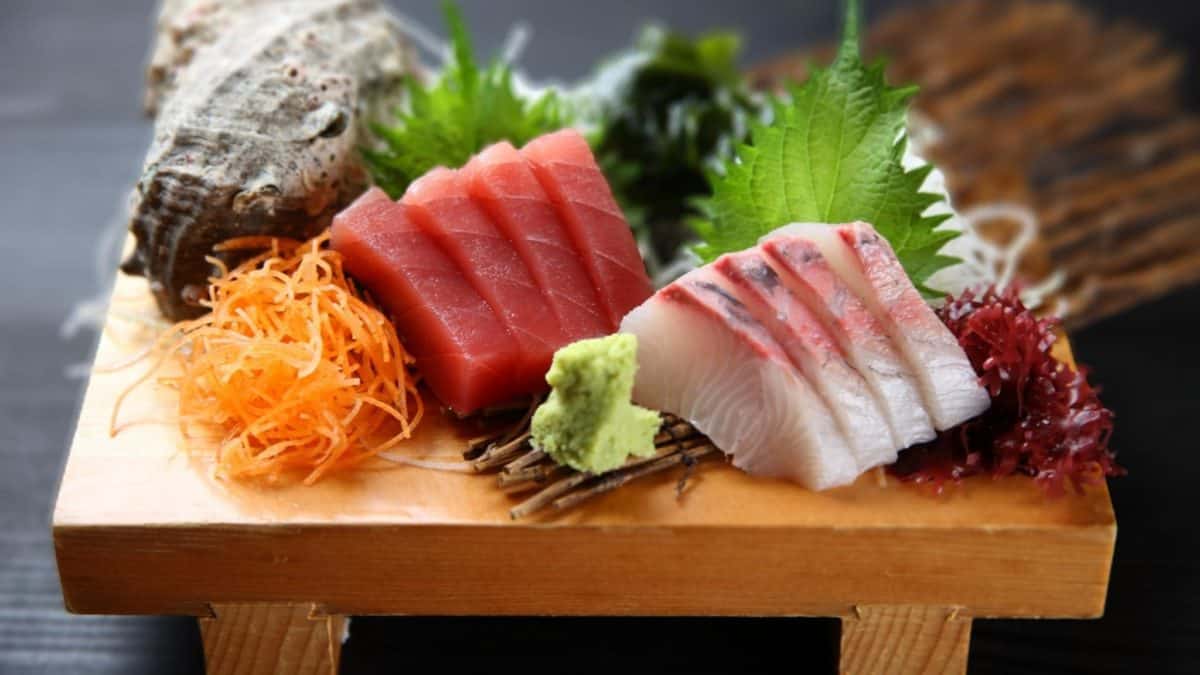Sashimi: A Delicacy From The Sea [Not Only From The Sea!]
Sashimi is made up of thin slices of raw fish or seafood. It can be served as an appetizer, main course, or side dish.
The best part about sashimi is that it can be tailored to your taste. You can choose your favorite type of fish or seafood to create a dish that is perfect for you.
Whether you are looking for something light and refreshing or something more filling and hearty, sashimi has something to offer everyone.


Check out our new cookbook
Bitemybun's family recipes with complete meal planner and recipe guide.
Try it out for free with Kindle Unlimited:
Read for freeIn this post we'll cover:
What does “sashimi” mean?
The word “sashimi” comes from the Japanese words “sa”, meaning “piercing”, and “shimi”, meaning “body”. It is thought that this name was given to the dish because the slices of fish or seafood are so thin that they appear to be pierced through.
It is thus pierced meat, meaning it can be fish, seafood or even other meats (such as horse sashimi).
How is sashimi made?
The key to making delicious sashimi is to start with the freshest fish or seafood possible. The fish should be cleaned and gutted immediately after being caught. It is then frozen in a process called “flash freezing”, which helps to preserve the quality of the fish.
Once the fish has been frozen, it is ready to be sliced. Sashimi chefs use special knives called “yanagiba” to create thin, even fish slices. The thickness of the slices can vary depending on the type of fish being used and the chef’s preference.
After the fish has been sliced, it is then plated and served with a variety of dipping sauces and garnishes. The most common dipping sauce for sashimi is soy sauce, but wasabi (Japanese horseradish) and ginger are also popular choices.
What are the most popular types of sashimi?
There are many different types of sashimi, but some of the most popular include:
- Maguro (tuna)
- Sake (salmon)
- Hamachi (yellowtail)
- Ebi (shrimp)
- Uni (sea urchin)
What does sashimi taste like?
The taste of sashimi varies depending on the type of fish or seafood used. In general, sashimi is a very delicate dish with a light, refreshing flavor because only fresh seafood is used. The texture of sashimi is also quite unique – it is soft and melt-in-your-mouth.
What’s the origin of sashimi?
Many think sashimi originated from a dish called namasu made from uncooked fish and vegetables that were thinly sliced and vinegared, which has been around since the Heian period.
Sashimi has become increasingly popular as more people are exposed to Japanese culture and cuisine. It is now commonly found on the menus of sushi restaurants around the world.
What’s the difference between sashimi and sushi?
Sushi is a type of dish that includes vinegared rice, while sashimi is simply thinly sliced raw fish or seafood.
What’s the difference between sashimi and nigiri?
Nigiri is a type of sushi that includes a slice of raw fish or seafood on top of vinegared rice, while sashimi is simply thinly sliced raw fish or seafood.
Sashimi etiquette
If you are new to eating sashimi, there are a few etiquette tips you should keep in mind.
First, it is considered rude to pick up a piece of sashimi with your hands. Instead, use chopsticks to pick up the fish and dip it into soy sauce before eating.
Second, be sure to eat the ginger that is served with your sashimi. The ginger is used to cleanse your palate in between different types of fish.
Is sashimi healthy?
Sashimi is a healthy dish because it is low in calories and fat. It is also a good source of protein, omega-3 fatty acids, and vitamins A and D.
However, sashimi can also be high in mercury depending on the type of fish used. Therefore, it is important to eat sashimi in moderation and to avoid fish that is high in mercury, such as shark, swordfish, and king mackerel (which are not the usual types of sashimi).
Conclusion
Sashimi is a delicious light dish for those that love fish and a great addition to eat next to other sushi at the sushi restaurant.
Check out our new cookbook
Bitemybun's family recipes with complete meal planner and recipe guide.
Try it out for free with Kindle Unlimited:
Read for freeJoost Nusselder, the founder of Bite My Bun is a content marketer, dad and loves trying out new food with Japanese food at the heart of his passion, and together with his team he's been creating in-depth blog articles since 2016 to help loyal readers with recipes and cooking tips.
